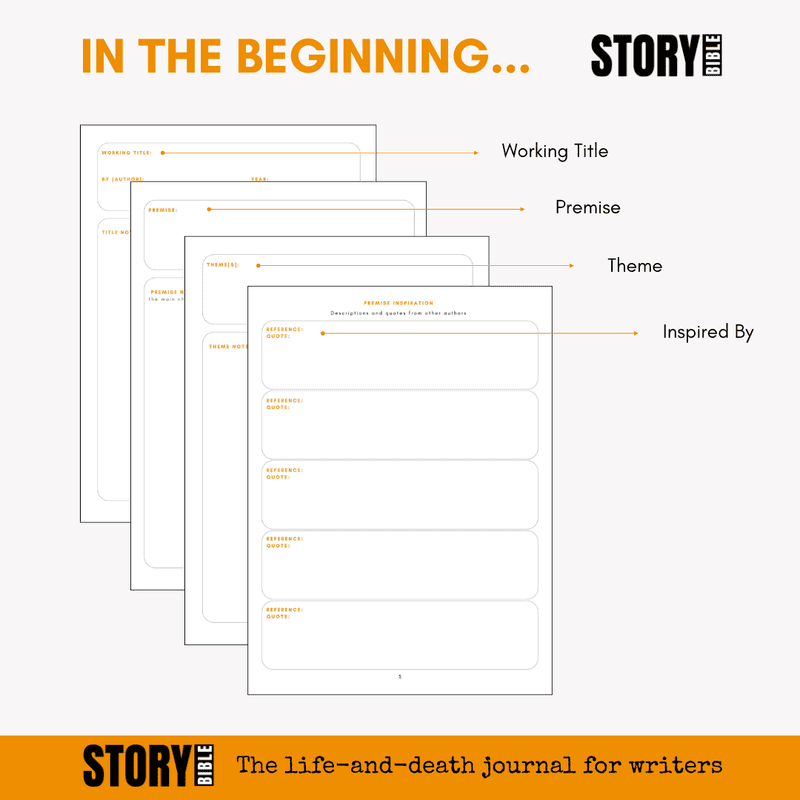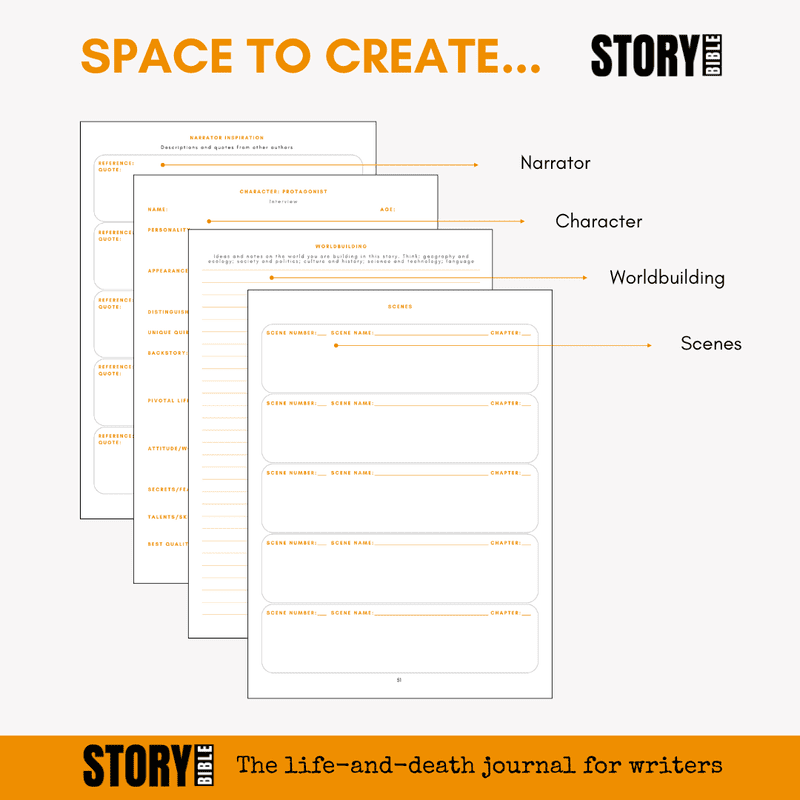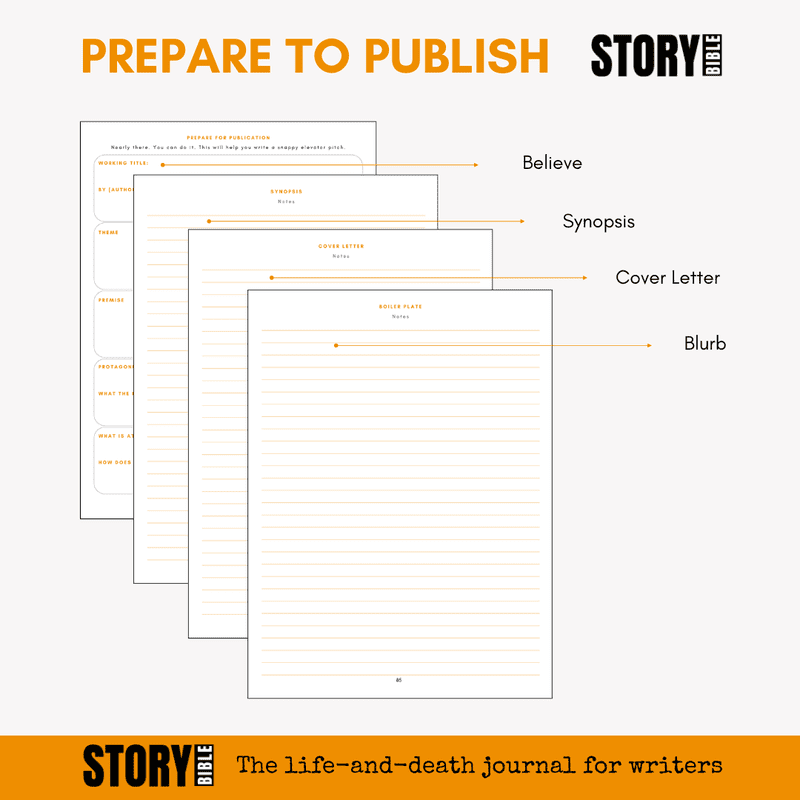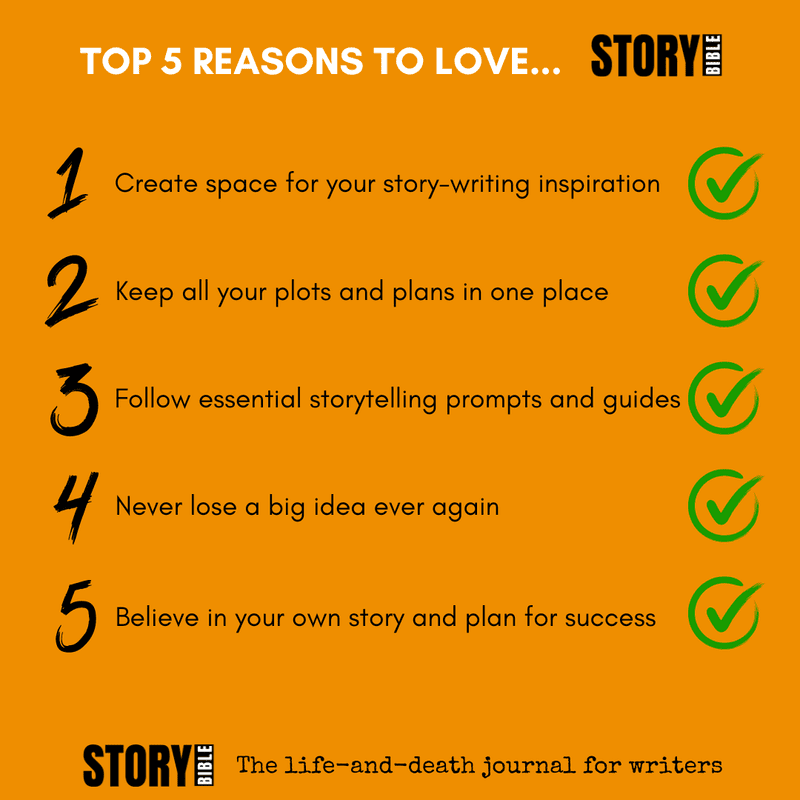The journey of writing a story, the path can often feel overwhelming so begin your own Story Bible.
You may find yourself grappling with a multitude of ideas, characters, and plotlines swirling in your mind. This is where the importance of story organization comes into play. A Story Bible helps to keep all those great ideas in one place.
By establishing a structured approach to your writing, you can transform chaos into clarity, allowing your creativity to flourish. Story organization not only helps you keep track of your narrative elements but also enhances the overall coherence and flow of your work. As you delve deeper into the world of storytelling, you will discover that organization is not merely a tool for efficiency; it is an essential component of the creative process.
A well-organized story allows you to maintain consistency in your characters' development, ensure that plot points are logically connected, and create a satisfying reading experience for your audience. In this article, you will explore various strategies for organizing your story, from creating a comprehensive Story Bible to utilizing digital tools that streamline your writing process. By the end, you will be equipped with the knowledge to bring order to your creative endeavors.
Key Takeaways
- Story organization is essential for keeping track of characters, plot outlines, and research materials.
- Creating a Story Bible helps to maintain consistency in the story world, including details about characters, settings, and timelines.
- Keeping track of character profiles helps to ensure that each character remains consistent throughout the story.
- Plot outlines and story arcs help to maintain a cohesive and engaging narrative for the reader.
- Research and reference materials are important for adding depth and authenticity to the story world.
Creating a Story Bible
One of the most effective ways to organize your story is by creating a Story Bible. This document serves as a central repository for all the essential information related to your narrative. Think of it as a reference guide that you can turn to whenever you need to recall details about your characters, settings, or plot points.
A well-constructed Story Bible can save you time and frustration, allowing you to focus on the actual writing rather than getting lost in the minutiae of your story. In your Story Bible, you should include character profiles that detail each character's background, motivations, and relationships with others. Additionally, consider incorporating descriptions of your settings, including their significance to the plot and how they influence the characters' actions.
You might also want to outline key plot points and themes that will guide your narrative. By compiling this information in one place, you create a valuable resource that not only aids in consistency but also inspires new ideas as you develop your story further.
Keeping Track of Character Profiles

Characters are the heart and soul of any story, and keeping track of their profiles is crucial for maintaining their authenticity throughout your narrative. As you create your characters, take the time to develop detailed profiles that encompass their physical attributes, personality traits, backstory, and motivations. This level of detail will help you understand how each character fits into the larger narrative and how they interact with one another.
You may find it helpful to categorize your character profiles based on their roles in the story-protagonists, antagonists, side characters, etc. This organization allows you to see how each character contributes to the overall plot and themes. Additionally, consider noting any character arcs or transformations that occur throughout the story.
By tracking these developments, you can ensure that your characters remain dynamic and relatable, ultimately enhancing the reader's connection to them.
Plot Outlines and Story Arcs
Once you have established your characters, the next step is to create plot outlines and story arcs that will guide your narrative. A plot outline serves as a roadmap for your story, helping you visualize the progression of events and ensuring that each scene serves a purpose in advancing the plot. You might choose to use various outlining methods, such as the three-act structure or the snowflake method, depending on what resonates with you as a writer.
In addition to outlining individual scenes, it's essential to consider the overarching story arc. This involves identifying key turning points and moments of conflict that will drive your narrative forward. By mapping out these elements, you can create a sense of pacing and tension that keeps readers engaged.
Remember that a well-structured plot not only provides direction but also allows for organic character development as they navigate challenges and evolve throughout the story.
Research and Reference Materials
Research plays a vital role in enriching your storytelling experience. Whether you're writing historical fiction or crafting a fantasy world, having accurate information at your fingertips can lend authenticity to your narrative. As you write, take note of any research materials or references that inform your work.
This could include articles, books, documentaries, or even interviews with experts in relevant fields. Organizing your research materials is just as important as gathering them. Consider creating a dedicated section in your Story Bible for research notes and references.
You might categorize this information based on themes or topics relevant to your story. By doing so, you'll have easy access to valuable insights that can enhance your writing and provide depth to your characters and settings.
Organizing Writing Prompts and Inspirations

Inspiration can strike at any moment, and as a writer, it's essential to capture those fleeting ideas before they slip away. Organizing writing prompts and sources of inspiration can help fuel your creativity and keep your writing fresh. You might consider maintaining a dedicated notebook or digital document where you jot down prompts, quotes, or images that resonate with you.
Additionally, think about categorizing these inspirations based on themes or genres. For instance, if you're working on a fantasy novel, you could create sections for magical creatures, world-building ideas, or character archetypes. This organization allows you to revisit these prompts when you're feeling stuck or in need of a creative boost.
By having a well-curated collection of inspirations at hand, you'll be better equipped to infuse your writing with originality and excitement.
Digital Tools and Apps for Story Organization
In today's digital age, numerous tools and applications can assist you in organizing your writing projects effectively. From dedicated writing software like Scrivener to note-taking apps like Evernote or Notion, there are options available to suit every writer's needs. These tools often come equipped with features that allow you to create outlines, store character profiles, and even collaborate with others if you're working on a team project.
When selecting digital tools for story organization, consider what aspects are most important for your writing process. Do you prefer visual aids like mind maps? Or do you thrive on detailed outlines?
Experiment with different applications until you find one that complements your workflow. The right digital tool can streamline your organization efforts and free up more time for what truly matters-writing.
Tips for Maintaining a Writer's Bible
Creating a writer's bible is just the beginning; maintaining it is equally crucial for its effectiveness. As you progress through your writing journey, make it a habit to update your Story Bible regularly. This includes adding new character details as they develop or adjusting plot points based on changes in direction.
By keeping your Story Bible current, you'll ensure that it remains a reliable resource throughout the writing process. Additionally, consider setting aside time during each writing session to review your writer's bible before diving into new material. This practice can help refresh your memory about key details and inspire new ideas as you write.
Remember that organization is an ongoing process; by nurturing your writer's bible consistently, you'll cultivate an invaluable tool that supports your creative endeavors for years to come. In conclusion, mastering the art of story organization is essential for any writer looking to bring their narrative visions to life. By creating a comprehensive Story Bible tracking character profiles meticulously, outlining plots effectively, conducting thorough research, organizing inspirations thoughtfully, utilizing digital tools wisely, and maintaining an up-to-date writer's bible, you'll set yourself up for success in your writing journey.
Embrace these strategies as part of your creative process and watch as they transform the way you approach storytelling.
If you're looking to enhance your storytelling skills beyond just organizing your story ideas, you might find the article "Shot to the Heart: Power of Theme Revealed" particularly insightful. This piece delves into the importance of theme in storytelling, offering guidance on how to weave a compelling theme throughout your narrative. By understanding the power of theme, you can create stories that resonate more deeply with your audience, complementing the organizational strategies discussed in "How to Organize Your Story Ideas and Never Lose a Good One Again."




